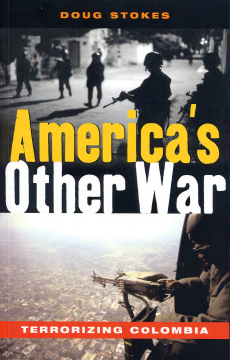
Additional Information
Book Details
Abstract
This controversial book maintains that in Colombia the US has long supported a pervasive campaign of state violence directed against both armed insurgents and a wide range of unarmed progressive social forces. While the context may change from one decade to the next, the basic policies remain the same: maintain the pro-US Colombian state, protect US economic interests and preserve strategic access to oil. Colombia is now the third largest recipient of US military aid in the world, and the largest by far in Latin America. Using extensive declassified documents, this book shows that the so-called "war on drugs", and now the new war on terror in Colombia are actually part of a long-term Colombian "war of state terror" that predates the end of the Cold War with US policy contributing directly to the human rights situation in Colombia today.
'This study provides a uniquely perceptive analysis of the tragic situation in Columbia, and its far-reaching implications for understanding the past and the evolving global order.'
Noam Chomsky
'For those looking for reassurance this is not the book for them: for those however seeking to peel back the layers of officialese and get to the heart of things, this is a must read.'
Michael Cox, London School of Economics
'A well-researched and impeccably documented exposé of USA duplicity and intervention in Colombia. This book fills a critical gap in the literature on Colombia and on post-Cold War inter-American relations.'
William I. Robinson, University of California-Santa Barbara
'Stokes's book represents a valuable and up-to-date survey of US support for counter-insurgency in Colombia.'
Luis van Isschot, The International History Review
Doug Stokes is a lecturer in International Politics at the Department of International Politics, Aberystwyth, University of Wales.
Table of Contents
| Section Title | Page | Action | Price |
|---|---|---|---|
| Cover | Cover | ||
| Contents | v | ||
| Acknowledgements | vi | ||
| Glossary | vii | ||
| Foreword by Noam Chomsky | viii | ||
| 1 | Introduction: interpreting US foreign policy in Colombia | 1 | ||
| Notes | 14 | ||
| 2 | US objectives in Latin America during the Cold War | 18 | ||
| Orthodox interpretations of US Cold War foreign policy: East versus West | 18 | ||
| Revisionist historiography and US Cold War foreign policy: North versus South | 21 | ||
| What was the USA containing in Latin America during theCold War? | 25 | ||
| Soviet policy in Latin America | 32 | ||
| Notes | 34 | ||
| 3 | US objectives in Latin America after the Cold War | 39 | ||
| US post-Cold War foreign and security policy objectives: the discontinuity thesis | 39 | ||
| US post-Cold War foreign policy: the continuity thesis | 46 | ||
| Notes | 53 | ||
| 4 | Installing state terror in Colombia | 57 | ||
| US CI strategy and the legitimation of state terrorism | 59 | ||
| Antecedents to US CI in Colombia: la violencia | 67 | ||
| US policy, Plan Lazo and paramilitarism | 71 | ||
| The Colombian peace process and the democratic opening | 74 | ||
| Notes | 79 | ||
| 5 | From communism to the war on terror | 84 | ||
| From Bush to Clinton: the decertification of Colombia | 87 | ||
| Clinton’s legacy: ‘Plan Colombia’ | 92 | ||
| From narco-guerrillas to narco-terrorists: the Andean Regional Initiative and the USA’s new ‘war on terror’ | 105 | ||
| Notes | 114 | ||
| 6 | Conclusion: counter-insurgency, capital andcrude | 122 | ||
| Notes | 134 | ||
| Sources | 137 | ||
| Index | 141 |
